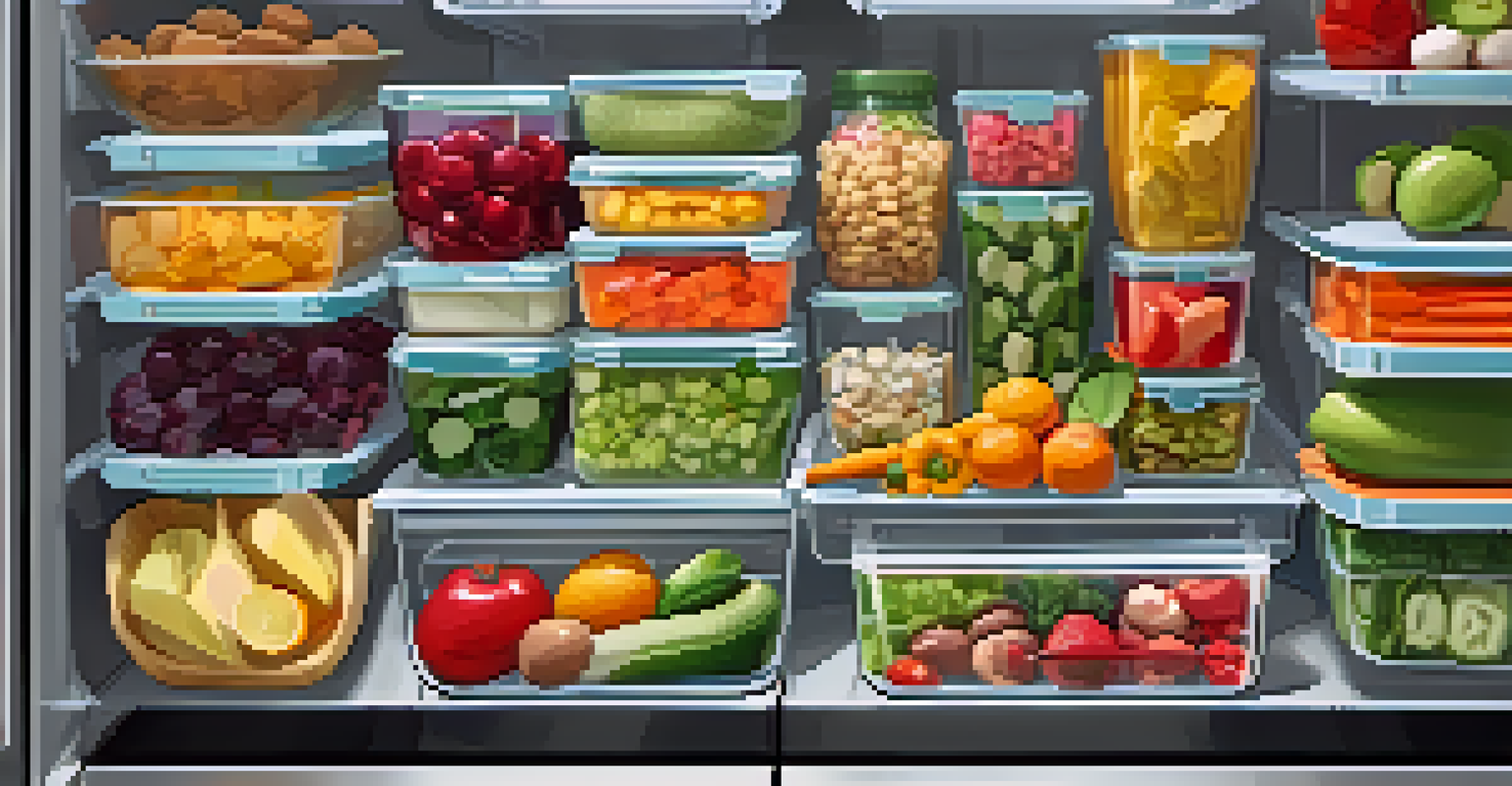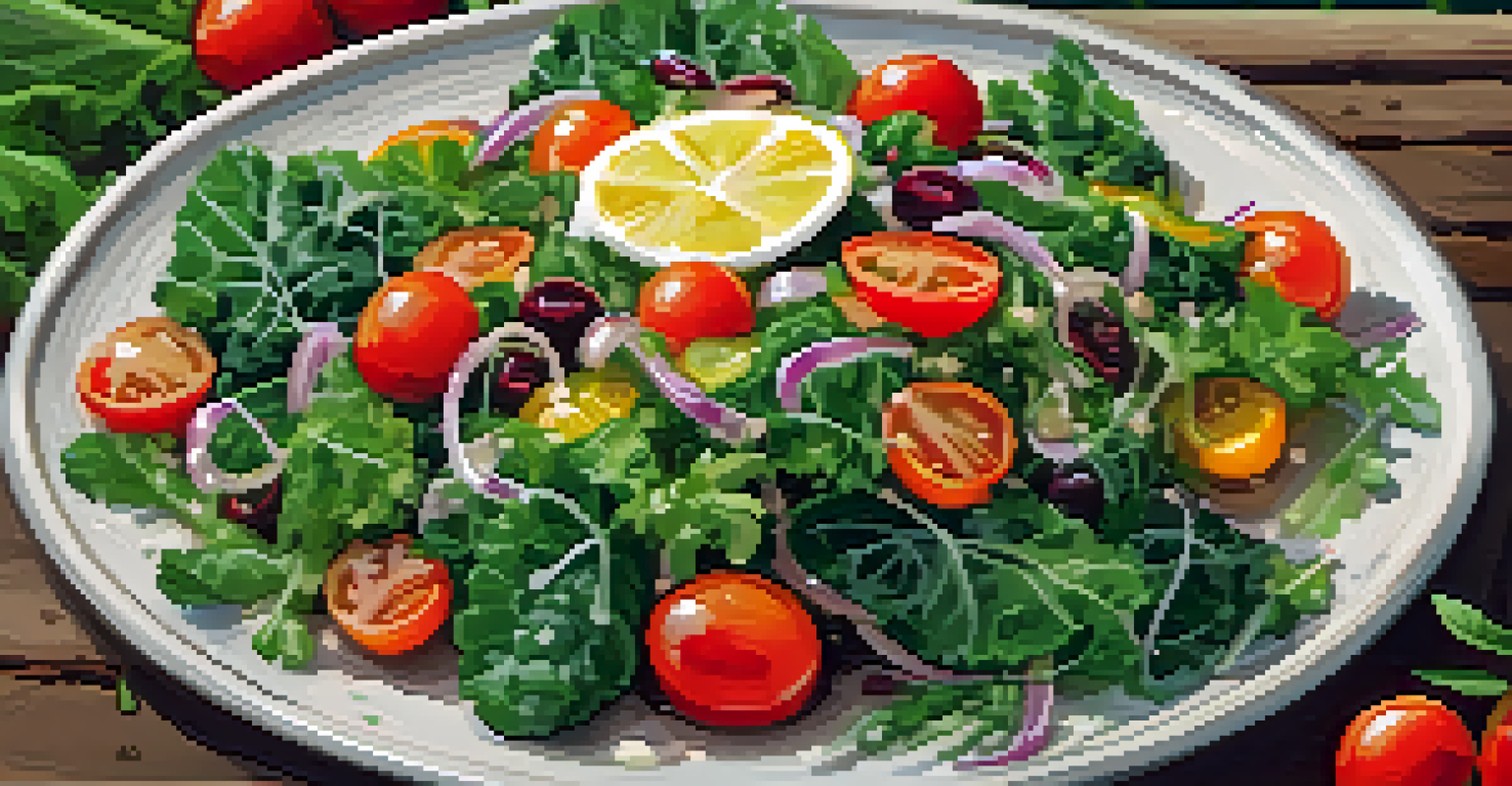Tips for Meal Prepping Raw Food for the Week Ahead

Understanding the Basics of Raw Food Meal Prep
Meal prepping raw food is all about planning ahead to ensure you have nutritious meals ready to go. It involves selecting fresh, whole ingredients that require little to no cooking, making it a great option for busy lifestyles. By embracing raw food meal prep, you can save time, reduce food waste, and enjoy healthier meals throughout the week.
Eating raw food is a way to connect with the earth’s natural rhythms and nourish our bodies with fresh, unprocessed ingredients.
A good starting point is familiarizing yourself with the types of raw foods available, such as fruits, vegetables, nuts, and seeds. These ingredients are not only packed with nutrients but also offer a variety of flavors and textures. Understanding how to combine them can lead to delicious and satisfying meals.
To make the most of your raw food meal prep, it’s helpful to have a clear plan. Think about what meals you want to prepare and how you can incorporate a mix of ingredients to keep things interesting. This foundational step will set you up for success as you dive into the world of raw food.
Choosing the Right Containers for Storage
When it comes to meal prepping, the right storage containers can make all the difference. Opt for airtight containers that are durable and easy to stack, as they will keep your raw ingredients fresh for longer. Consider using glass containers, which are not only eco-friendly but also help prevent any unwanted flavors from leaching into your food.

Labeling your containers is another smart strategy. You can easily keep track of what you have prepared and when it needs to be consumed. This simple step helps minimize waste and ensures that you enjoy your meals at their peak freshness.
Plan Ahead for Raw Meal Prep
Meal prepping raw food helps you save time and enjoy nutritious meals by planning your ingredients and meals in advance.
Additionally, invest in various sizes of containers to accommodate different types of meals. Having a mix of small, medium, and large containers allows for flexibility in portion sizes and makes it easier to organize your fridge. Being organized will streamline your meal prep process and help you stay motivated.
Planning Your Menu for the Week
Creating a menu for the week is a crucial step in effective meal prepping. Start by considering your schedule and identifying which days you’ll need quick meals on hand. This foresight will enable you to prepare the right amount of food without overcommitting yourself.
The more you eat raw, the more you crave raw.
Incorporate a variety of recipes that utilize similar ingredients to maximize efficiency and minimize waste. For example, if you buy a bunch of kale, think about how you can use it in salads, smoothies, or as a topping for raw wraps. This approach not only simplifies your shopping list but also keeps your meals exciting.
Lastly, don’t be afraid to experiment! Meal prepping is a great opportunity to try new recipes and combinations. Keep notes on what works and what doesn’t, so you can refine your menu over time and discover your favorites.
Shopping Smart for Fresh Ingredients
When it comes to meal prepping raw food, sourcing fresh ingredients is key. Visit local farmers' markets or organic grocery stores to find seasonal produce that’s at its peak flavor and nutritional value. Fresh ingredients not only taste better but also enhance the overall quality of your meals.
Plan your shopping list based on your menu while keeping an eye out for sales or promotions. Buying in bulk can also be cost-effective, especially for items like nuts, seeds, and grains. This approach allows you to stock up on essentials that can be used in a variety of dishes throughout the week.
Choose Quality Storage Solutions
Using airtight and appropriately sized containers ensures your fresh ingredients stay organized and maintain their flavor.
Lastly, don’t forget to inspect your ingredients carefully. Look for signs of freshness, such as vibrant colors and firm textures. By selecting high-quality produce, you'll set the stage for delicious and nutritious raw meals.
Prepping Ingredients for Easy Access
Once you've gathered your ingredients, it's time to prep them for the week ahead. Start by washing and chopping fruits and vegetables, as this will save you valuable time during busy days. Store prepped ingredients in your containers, ready to grab and go whenever you need them.
Consider creating snack packs with raw veggies and hummus or fruit with nut butter for easy, healthy snacks throughout the week. Having these options readily available can help you resist the temptation of less healthy choices when hunger strikes.
Additionally, you can prepare larger batches of items like raw salads or energy balls to have on hand. This ensures you always have a wholesome meal or snack ready, making it easier to stick to your healthy eating goals.
Keeping Your Meals Flavorful and Varied
One of the challenges of meal prepping is keeping meals interesting, especially with raw food. To combat this, focus on incorporating a mix of spices, herbs, and dressings that can easily elevate your dishes. A simple lemon-tahini dressing can transform a basic salad into a gourmet experience.
Experimenting with different textures can also add excitement to your meals. For instance, combine crunchy vegetables with creamy dips or mix soft fruits with crunchy nuts. This variety not only makes meals more enjoyable but also adds nutritional diversity.
Keep Meals Diverse and Flavorful
Incorporating various spices, textures, and cuisines can make your raw meals exciting and enjoyable throughout the week.
Don’t hesitate to explore different cuisines for inspiration. Incorporating flavors from Mediterranean, Asian, or Mexican dishes can breathe new life into your meal prep routine. Your taste buds will thank you for the adventure!
Storing and Enjoying Your Prepared Meals
After prepping your meals, proper storage is essential to maintain freshness. Place your containers in the fridge, ensuring that they are organized and easily accessible. This way, you can quickly grab a meal or snack without having to rummage through your fridge.
It's also important to keep an eye on expiration dates and consume your meals in a timely manner. Generally, raw food can last around 3-5 days in the fridge, so plan accordingly. If you notice any ingredients nearing their expiration, prioritize those in your meals.

Lastly, don’t forget to enjoy the process! Meal prepping can be a fun and rewarding experience that encourages a healthier lifestyle. By taking the time to prepare your meals, you’re investing in your well-being and making it easier to stick to your nutrition goals.